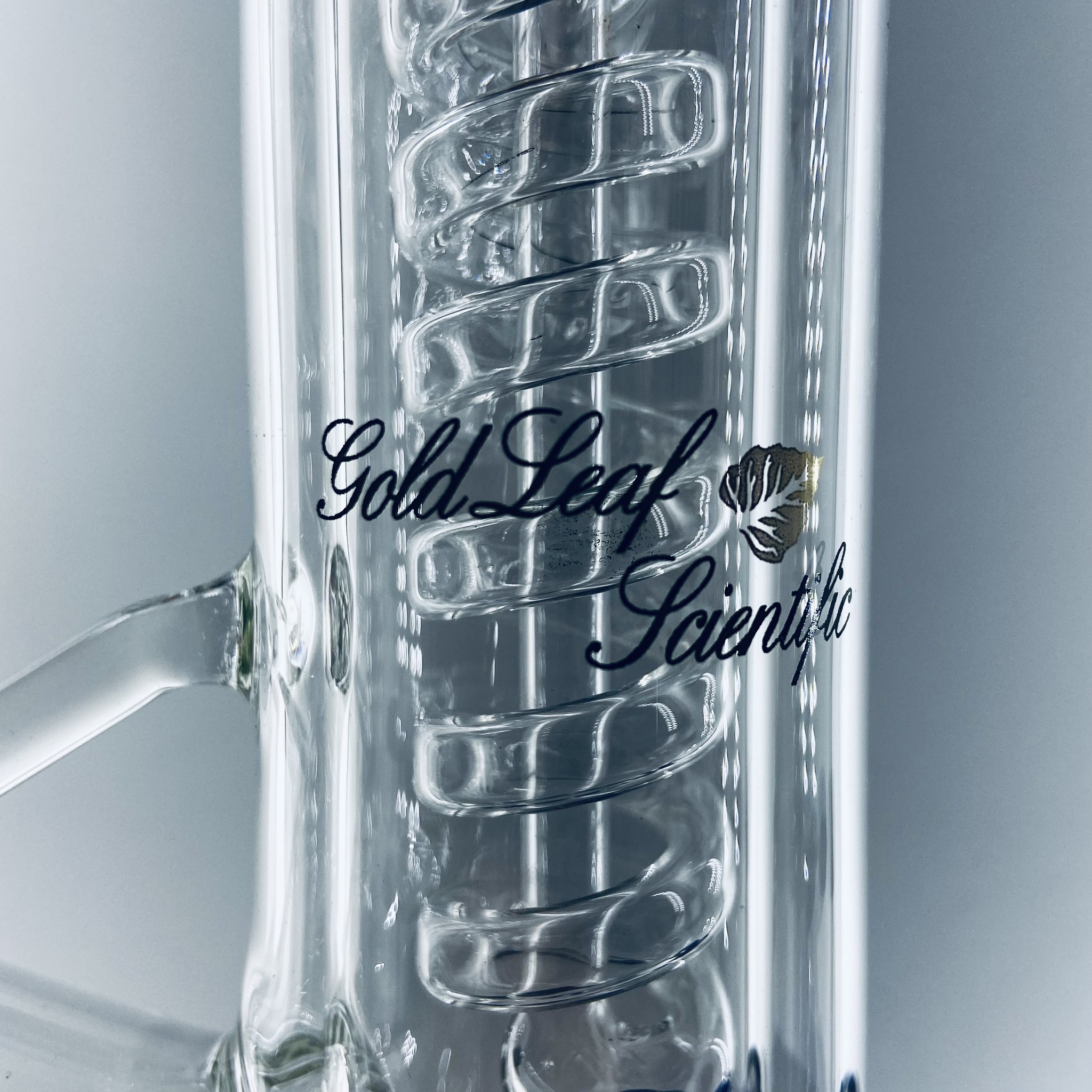You have no items in your shopping cart

24/7 Customer Service

Satisfaction Guarantee

Fast Delivery

Reasonable Price
Terpene Refinement System - Whitepaper

Terpene Refinement System: https://www.goldleaflabs.com/terpene-refinement-systems/
Intro
Throughout the evolution of cannabis and its relationship with humans, the scent compounds
have played a fundamental role in the experience with which the plant provides. People
noticed the smell was a pleasant attribute to the strain, but recently the notion that the
terpenes play a role in the psychoactive effect has been established. The importance of
terpenes to the overall effect is profound and for centuries this has helped guide the selection
and breeding in modern cannabis genetics. The end user has always placed a high value to the
scent characteristics of cannabis, and this has led to a wide range of different scent profiles
bred into the plant, which we plan to target and refine.
This white paper aims to describe the need for a new type of refinement system that provides a
valuable product which cannot be commoditized. Since the system in still yet to be released,
the paper will not go too in depth on specifics. The main goal here is to provide an overview of
the problem in the industry and the solution that can be provided. As the product comes closer
to its initial release, SOP’s and technical overviews will become public.
The Problem
When short path distillation was released into cannabis around 2016, it gave the community
the power to create a nearly pure cannabinoid concentrate called “distillate.” As one of the
pioneers of this process we saw firsthand how this could lead to a cheap and powerful end-
product, but it was also evident that this could cause problems in the future. We knew that if
anyone could create nearly the same grade of distillate, it would cause commoditization which
is when a like product is grouped together and sold at a standard market price instead of
considering individual differences that affect value. Of course, there are small differences with
each producer, but these are minimal so the only way to compete for a sale is to accept a lower
price. This leads each person to sell at a lower price causing others to sell at a lower price and
so on. Equilibrium is eventually reached when some are removed through bankruptcy or
acquisition. The last few that hang on must have economy of scale, access to cheaper capital, or
other means to reduce costs to stay competitive but in any case, this environment causes prices
to remain depressed.

An Unhealthy Market
From the standpoint of the consumer this leads to more buying power and would be
considered a good thing, but this lower price is only an option because the choices avilable for
that consumer have been removed. Simply put, the consumer gains by the reduced prices but
loses with less options to choose from. The balance between benefit and detriment to the
consumer can cut in any direction. A price sensitive consumer might not care about the extra
options avilable at a higher price because they cannot afford it, and the opposite is true of a
consumer that is less price sensitive. When both are true this would indicate balanced interest,
but in the case of depressed prices the interest might skew heavily into one side favor. Under
these conditions the consumer, and certainly the producers, would benefit from more choices
even with a higher price.
Natural Complexity Limits Commoditization
When it comes to cannabis, the variations in terpene profiles naturally lend themselves to
noticeable and immediately recognizable differences which prevent over commoditization. This
was the case for centuries until the short path process was released. When consumers
complained of the lack of taste and effect, many producers jumped onto the closest thing to
the natural profile. Companies that attempted to recreate the plants natural terpene profile
proliferated. While these recreated formulas could be considered enjoyable, they never came
close to recreating the actual terpene profile of cannabis. The terpene profile in the natural
plant is insanely complex with hundreds or even thousands of compounds which would lend to
the overall scent. It is not economically feasible to recreate such a complex profile, so flavor or
terpene companies typically only select 5-10 of the terpenes in a sample. This is akin to a rock
band playing a classical symphony. While there are some profiles which can be closely
replicated, most are sufficiently complex, and they will never be substituted or recreated to an
acceptable degree. The benefit is clear from nearly every perspective to prevent over
commoditization and depressed prices, and clearly using the natural terpene profiles the plant
provides would prevent this.
Process and System Overview
The volatility of terpenes is very high, while the cannabinoids are low and harder to dissolve so
it makes sense to separate the extraction and purification into two phases. One is the
extraction and purification of terpenes, and the other extraction and purification of the
cannabinoids. Typically, the terpenes are extracted by a CO2 or hydrocarbon system, then that
terpene rich crude is refined using our Terpene Refinement System. The refinement process is
essentially a fractional distillation process, but to eliminate degradation it is done at high
vacuum and low temperature. During the development of the refining process a short path
distillation system was used to perform the fractional distillation, but the general design of a
short path system (high temperature, low volatility) creates several limitations and
disadvantages for a highly volatile low temperature distillation. For example, short path
condensers tend to be so short that fractions bypass the collection vessel. Oxidation during
transfer was also an issue so our Terpene Refinement System design includes customized parts
to prevent this while allowing unlimited receiving flask transfers. Even small considerations like
loss of terpene fraction to interior walls was considered into the design. Instead of selling an
incorrect tool for the job we developed a uniquely designed system to meet these needs. It
took a lot of time and effort to develop this system (we started designs in 2018), and we do not
want to give our competitors too much insight so we will delay the full system pictures in our
website or in-depth descriptions for a short period. During this period the system will be
avilable for sale on a limited basis with selected partners and customers. Please reach out to us
to purchase or for more system insights.

Dollars and Scents, The Solution
Other extraction methods can work to retain the terpene profiles, but always come at a cost. A
hydrocarbon extraction and a CRC (color remediation column) can produce a nice extraction
with light color and a natural terpene profile. Unfortunately, many consumers want vape pens
which works best with a uniform liquid like distillate, and the CRC materials often absorb
terpenes, cause lack of flavor, and off taste.
Although the extra labor and steps associated with splitting the extraction process will incur
higher costs, it is important to note that these costs result in much higher profits. That is
because the loss of terpenes is a loss of product weight, and the two-phase extraction process
typically yields more terpenes per weight of cannabinoids. Obviously, the terpenes provide a
unique and enjoyable product, but the additional weight and higher selling price more than
offset any additional costs associated with their extraction or purification. While the additional
profits are welcomed, the main advantage of this system is that the terpene profile cannot be
replicated. The Goldleaf Terpene Refinement System also isolates fractions which can be mixed
with other terpene fractions from the same profile or even others. Thus, the ability to produce
limitless variation prevents commoditization and guarantees perpetual and consistent profits.
Notes and Comments
A potential point of concern is contamination of the terpene sample. The inhalation of products
is very different from ingestion so great care must be taken to protect the end user from
contamination. The small volume of terpenes along with differing chemistry makes removal of
pesticides difficult. Filtering should always be done down to the micron level to prevent spores
and other contaminants from the product. It might also be necessary to perform a
chromatography step if the terpene sample is found to be contaminated. We have included the
equipment needed for this and many other details in our Terpene Refinement System. Take
comfort knowing we have all the needed components in one kit. Includes SOP’s, product
guides, and tips to help you learn the process. In person training and classes are available as
well.
Conclusion
We believe this environment of stable and consistent profits is a healthy market, our goal is to
give you the tools to accomplish this. We have been working on this for some time now and it
has become clear to us that some parties may wish to keep this information secret. We think
this view is misguided and it is our opinion that a producer cannot take advantage of a
competitor with this information. They can only use this information to improve their own
products and offerings. Our hope is that everyone takes advantage of this opportunity, and
everyone’s products improve as a result. This is the tide that floats all boats.

